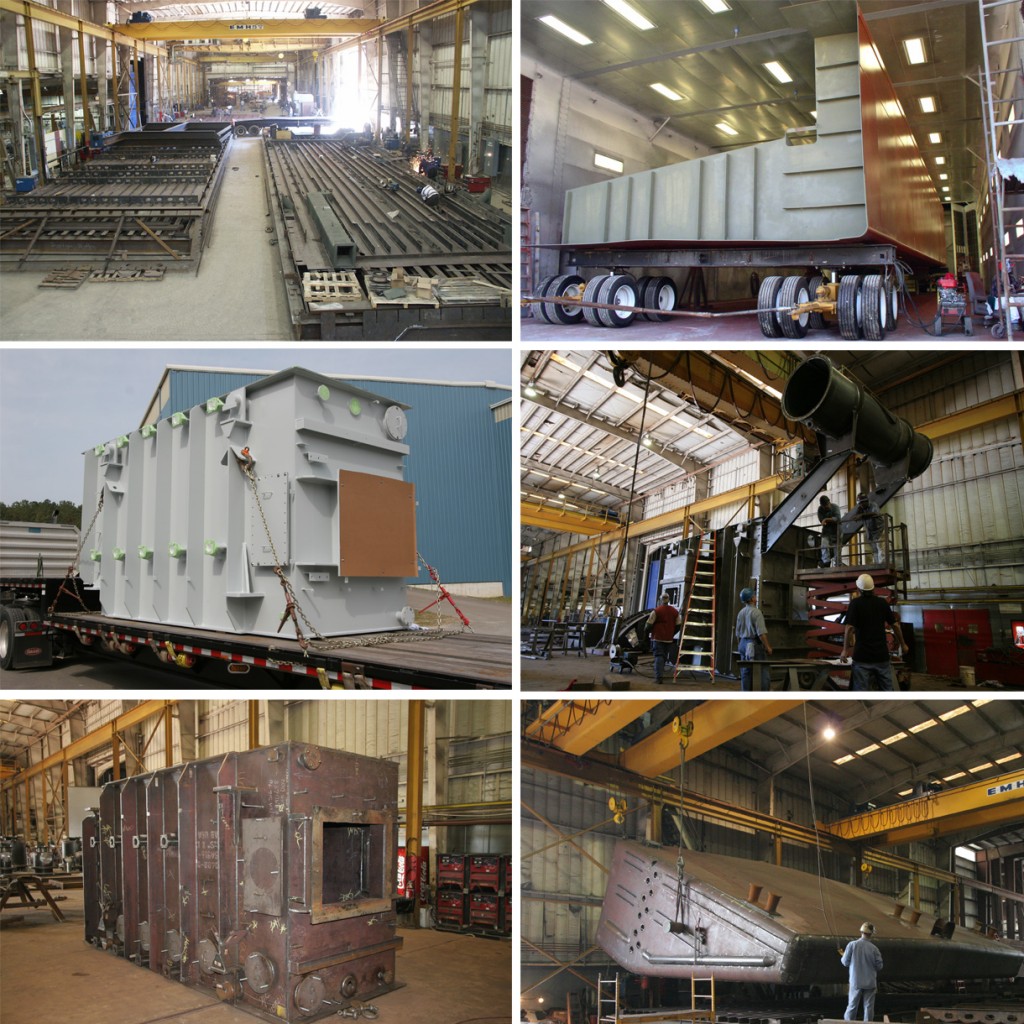Comprehensive Evaluation of Cutting-Edge Techniques in Steel Manufacture Market
As the steel construction market proceeds to progress, the integration of cutting-edge techniques has come to be necessary for staying affordable and satisfying the demands of modern production standards. In this dynamic sector where technology plays an essential duty, understanding the subtleties of these innovative strategies is not just an option yet a need for those looking to forge ahead in the ever-evolving globe of steel manufacture.
Laser Cutting Innovations
In the world of steel construction, laser cutting developments have actually changed the precision and performance of steel shaping processes. By harnessing the power of concentrated laser beams, suppliers can now attain unmatched degrees of accuracy when puncturing numerous kinds of steels. This modern technology makes it possible for intricate layouts to be carried out with minimal product waste, making it a cost-effective remedy for industries calling for high precision components.
Among the crucial benefits of laser cutting is its ability to handle a large range of materials, including stainless-steel, aluminum, and carbon steel, effortlessly. The process produces tidy, burr-free sides, getting rid of the demand for added finishing steps. Furthermore, the non-contact nature of laser cutting reduces the threat of product contamination, resulting in higher top quality final result.
Additionally, laser cutting makers can be configured to make swift, accurate cuts, considerably reducing manufacturing time compared to conventional cutting methods. This speed and accuracy make laser cutting especially ideal for mass manufacturing environments where efficiency is paramount. As modern technology remains to advancement, laser cutting is poised to play a significantly crucial role in the steel fabrication sector.

CNC Machining Innovations
The evolution of CNC machining innovations has ushered in a brand-new era of accuracy and efficiency in the steel manufacture market. Computer Numerical Control (CNC) equipments have actually changed steel construction by offering unrivaled accuracy and repeatability in the manufacturing process. metal fabrication melbourne. Among the essential developments in CNC machining is the integration of sophisticated software systems that make it possible for real-time monitoring and modifications, resulting in improved efficiency and top quality control
Additionally, the growth of multi-axis CNC devices has enabled the construction of complex steel elements with elaborate layouts that were formerly challenging to generate. These equipments can carry out a wide variety of machining operations, including milling, exploration, turning, and grinding, all with high degrees of accuracy.
In addition, the consolidation of automation and robotics in CNC machining has structured manufacturing procedures, decreased preparations, and decreased the margin of mistake. This assimilation of sophisticated innovations not just improves efficiency yet likewise makes certain constant quality across all made steel parts. In verdict, CNC machining developments remain to drive innovations in the steel construction market, setting new requirements for precision and efficiency.
Automated Welding Technologies
Automated welding modern technologies have actually changed the steel manufacture market, improving performance and accuracy in the welding process. These sophisticated innovations use computer-controlled systems to automate the welding process, resulting in greater productivity levels and boosted weld top quality. One of the vital advantages of automated welding is the capacity to carry out steel fixing intricate welds with constant precision, minimizing the possibility of mistakes and remodel.
Robotic welding systems are at the leading edge of automated welding modern technologies, providing unmatched rate and precision. These systems can deal with a large variety of welding jobs, from straightforward to complex, with convenience (metal fabrication melbourne). By making use of advanced sensing units and software, robot welders can adapt to variants in product and joint geometry, guaranteeing an uniform and reputable weld
In addition, automated welding modern technologies boost work environment safety by minimizing the direct exposure of human welders to harmful fumes and extreme warm. As the steel construction market continues to progress, incorporating automated welding modern technologies will be vital for firms looking to stay affordable and satisfy the growing needs for premium bonded items.
Robotics Assimilation in Manufacture
Using robot systems in construction processes has come to be a pivotal technique for boosting performance and precision in modern production environments. Robotics combination in steel construction uses a myriad of advantages, including increased performance, boosted high quality control, and boosted security procedures. These innovative robotic systems are geared up with sophisticated sensors and programming capabilities, enabling them to do intricate jobs with a high degree of precision and repeatability.
One of the vital advantages of robotics integration in steel fabrication is the ability to automate repetitive tasks, such as material handling, cutting, welding, and setting up procedures. This not only accelerates manufacturing cycles however also reduces the threat of human error, bring about greater total item top quality. Furthermore, robots can run 24/7, substantially boosting production outcome and conference limited task target dates.

3D Printing in Steel Manufacturing
Having reinvented the steel fabrication market with robotics combination, the blossoming exploration of 3D printing in steel manufacturing is positioned to more breakthrough the realm of modern production techniques. 3D printing, also called additive manufacturing, offers unprecedented design liberty and intricacy, making it possible for the development of detailed steel structures that were previously unattainable through conventional production techniques. By utilizing computer-aided design (CAD) software application, suppliers can exactly manage the layer-by-layer deposition of steel material, resulting in get rid of enhanced performances and geometries.
Among the key benefits of 3D printing in steel manufacturing is its ability to minimize product waste dramatically. Unlike subtractive manufacturing procedures where excess material is trimmed away, 3D printing only makes use of the required quantity of steel needed for the final part. This effectiveness not only causes set you back financial savings but also aligns with sustainable manufacturing practices by lessening environmental effect.
In addition, 3D printing enables quick prototyping and personalization, enabling the production of tiny sets of complex steel components with short lead times. As the modern technology remains to develop and come to be more accessible, its assimilation into mainstream steel fabrication procedures is anticipated to drive innovation and effectiveness across the market.
Conclusion
Finally, the steel construction market has actually seen considerable advancements in techniques such as laser cutting, CNC machining, automated welding, robotics combination, and 3D printing. These sophisticated innovations have reinvented the means steel items are made, causing increased precision, cost-effectiveness, and effectiveness. Continued investment in these cutting-edge techniques is essential for the industry to stay competitive and fulfill the needs of modern manufacturing procedures.
As the steel manufacture industry continues to progress, the integration of cutting-edge strategies has become necessary for staying competitive and satisfying the needs of contemporary manufacturing requirements.One of the vital benefits of laser cutting is its ability to take care of a wide array of materials, consisting of stainless steel, light weight aluminum, and carbon steel, with simplicity.Automated welding technologies have actually revolutionized the steel construction sector, enhancing effectiveness and precision in the welding procedure.Having revolutionized the steel construction sector through robotics combination, the blossoming expedition of 3D printing in steel production is positioned to further development the realm of contemporary production techniques.In final thought, the steel fabrication sector has seen significant advancements in techniques such as laser cutting, CNC machining, automated welding, robotics combination, and 3D printing.
 Barret Oliver Then & Now!
Barret Oliver Then & Now! David Faustino Then & Now!
David Faustino Then & Now! Phoebe Cates Then & Now!
Phoebe Cates Then & Now! Jane Carrey Then & Now!
Jane Carrey Then & Now! Nicki Minaj Then & Now!
Nicki Minaj Then & Now!